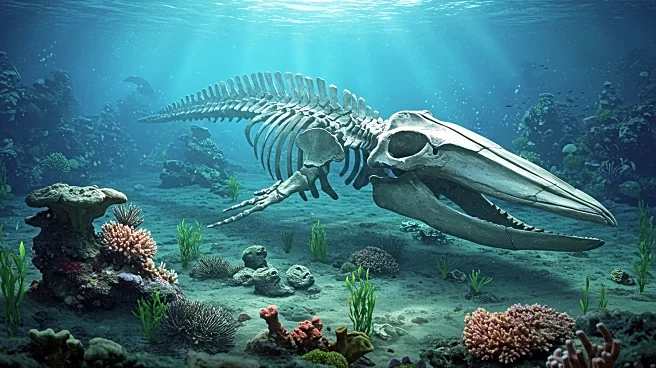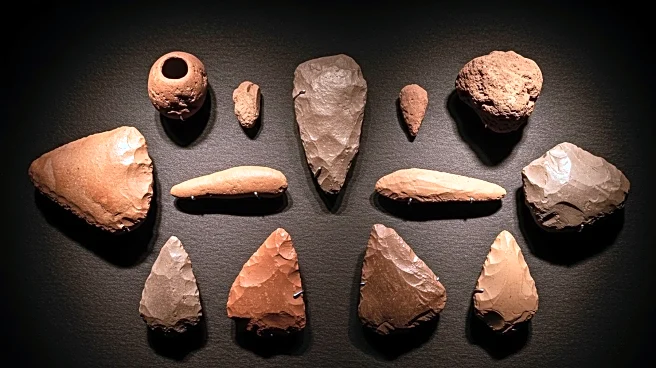Rapid Read • 8 min read
A team of paleontologists has uncovered evidence suggesting that early humans may have lived alongside Australopithecus, an ape species from which humans evolved, in Ethiopia. The discovery centers around teeth found in the Afar region, with Homo teeth being older than those of Australopithecus. This finding challenges the linear model of human evolution, indicating a more complex evolutionary history with multiple hominid lineages coexisting. The research, led by Kaye Reed from Arizona State University, highlights the non-linear nature of human evolution, suggesting that various species may have interbred or competed for resources.
AD
This discovery has significant implications for understanding human evolution, as it suggests a more intricate evolutionary process than previously thought. The coexistence of multiple hominid species in East Africa could reshape theories about human ancestry and adaptation. It raises questions about interbreeding and competition among early human species, potentially altering the narrative of human development. The findings could influence future research directions in paleoanthropology, prompting scientists to reconsider the evolutionary timeline and the interactions between different hominid species.
Further research is expected to explore the interactions between these species, including potential interbreeding and competition for resources. Scientists may conduct additional excavations in the Afar region to uncover more evidence and refine the understanding of human evolution. The study could lead to new hypotheses about the adaptive strategies of early humans and their evolutionary relationships with other hominids. Continued exploration in Ethiopia may provide deeper insights into the environmental conditions that facilitated the coexistence of these species.
The discovery prompts ethical and philosophical questions about the nature of human evolution and the survival of species. It challenges the notion of a linear progression from apes to modern humans, suggesting a more complex web of evolutionary paths. This could influence cultural perceptions of human ancestry and the interconnectedness of life forms. The findings may also impact educational narratives about evolution, encouraging a broader understanding of the diversity and adaptability of early human species.
AD
More Stories You Might Enjoy











